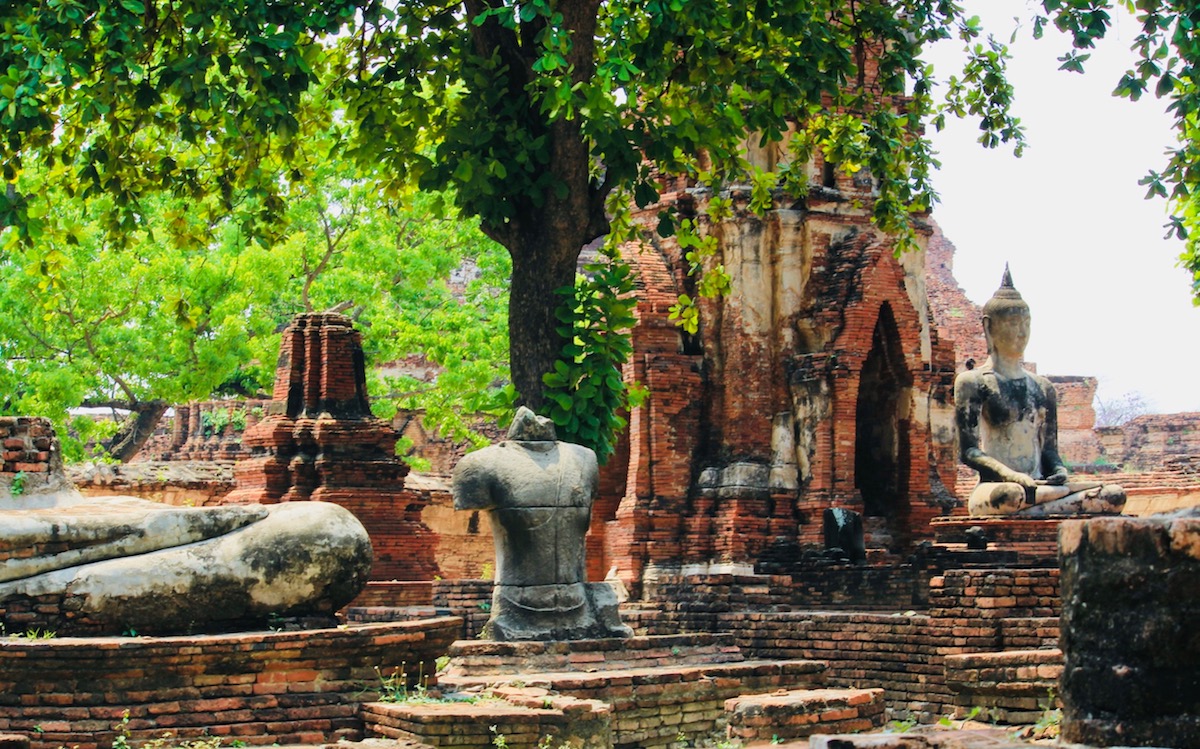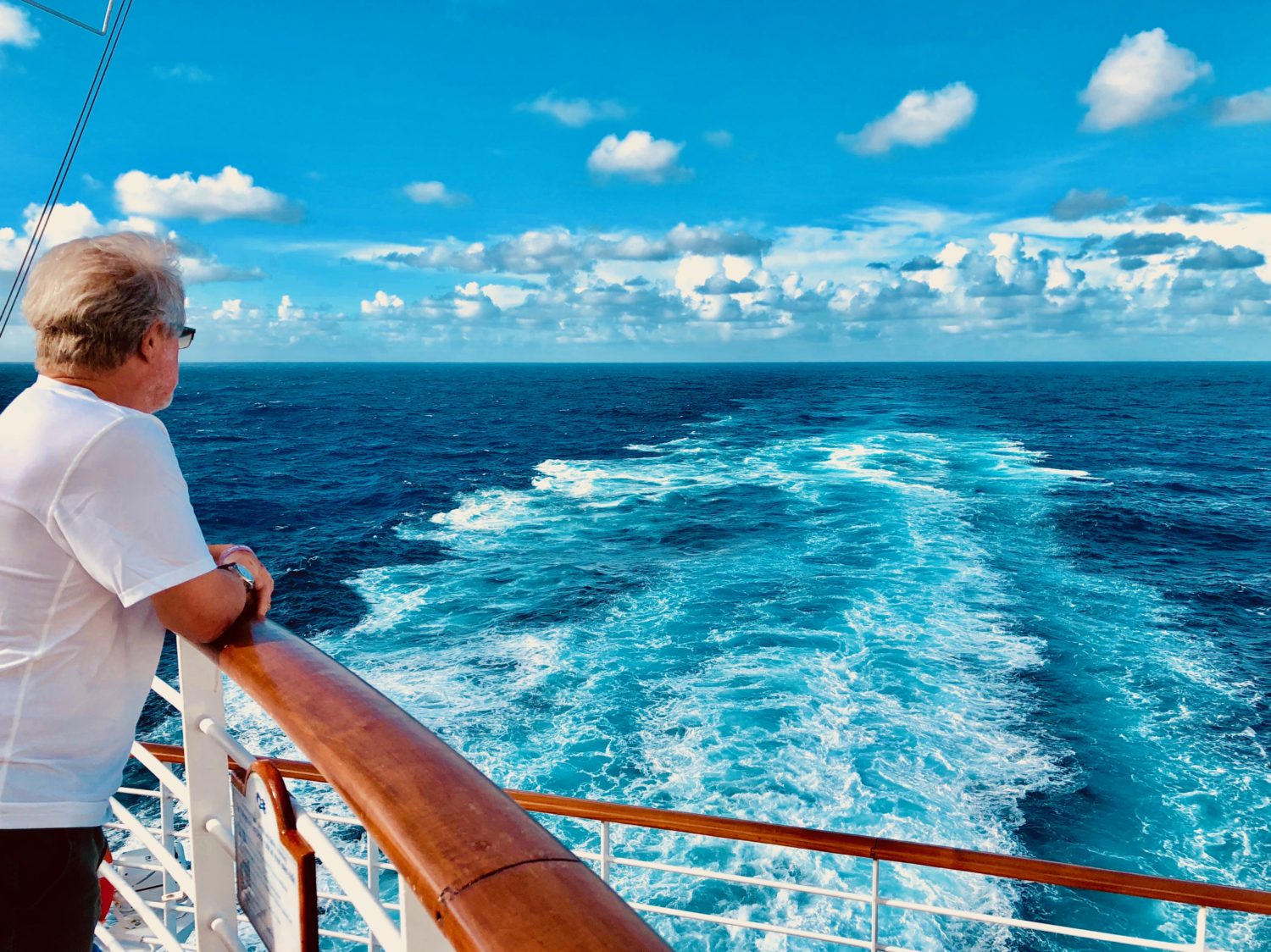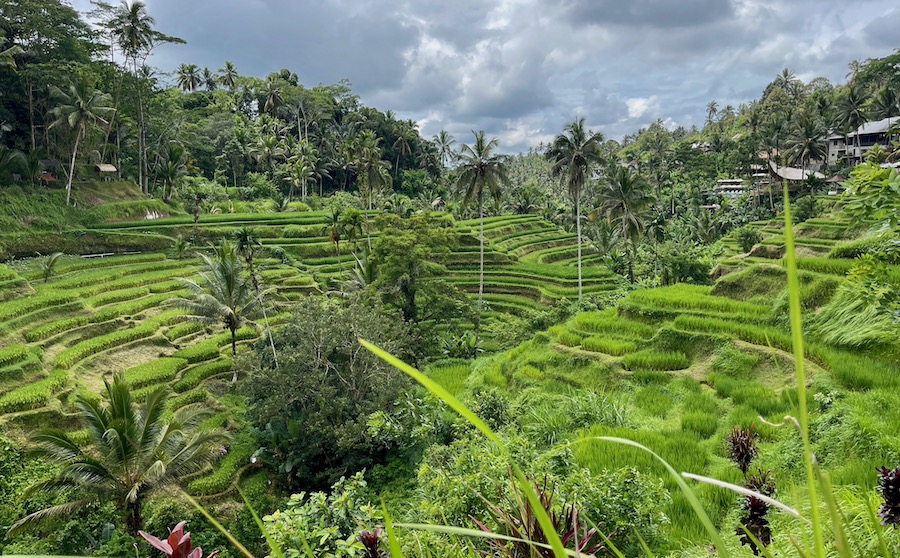
Thailand: Ancient Kingdoms, and an Elephant or Two
A ride on an elephant was definitely not part of the plan, but here we are: riding on

elephants. Go figure. We knew we were going to visit an

elephant rescue camp, but if you’d asked me yesterday if I would ever ride an elephant in this lifetime, that would be a definite ‘no’.
So glad we did (Padre even swam with them), and the elephant rescue camp impressed us so much that I plan to devote an entire post to our visit and the camp’s work in the near future, as well as longer posts on topics such as Burma, our visit to the Northern hill tribes, endemic poverty, education, and of course religion. We can’t go more than a block or two without seeing a Buddhist temple or shrine, and our guide and teacher, Ranee, has done a stellar job introducing us to her culture’s religious practices (another future post). Our time in Thailand has been filled with one ‘wow’ after another, in fact, so I plan to slowly cover the whole experience in posts over the next couple weeks – there has been so much to see, to learn, to absorb.
After Bangkok, we headed north for visits to significant historical sites in the middle of

Thailand. Another group member asked me if I was ‘templed out’ yet after Bangkok, and I just looked at him quizzically. NO – these sites show up in the history textbooks I spend so much time with in my part-time work, and to stand in the middle of an ancient kingdom is like bungee jumping to someone else, I guess. So if you’re not a history geek, a Thailand beach tour might be the thing for you instead of something like our tour.
For us, the ancient stuff fires our imaginations; What must it have been like back then to live here, and where did everyone go? We find the history of civilization endlessly fascinating – why kingdoms flourished, why they died out – so we are rapt students of the ancient. And hey – now that we’re getting on ancient ourselves, it fits – ancient is ok.

We worked our way back in time, starting with the most recent kingdom at Ayuyyhaya, the second Siamese capitol, once one of the largest cities in Southeast Asia in the 1400’s to 1600’s. (FYI – Thailand was formerly called Siam.) Its former city walls, palaces, monasteries and towers have been reduced to ruins – lots of crumbling stone walls and half-buildings, with impressive Buddhist statues embedded in the walls, or towering high above, elaborate carvings everywhere. It just takes a bit of imagination to get a sense of the former splendor that existed here.
There is some modern splendor among the ruins, too – a wildly popular movie series called

Love Destiny has fueled a run on ancient temple visits. It’s a story set in ancient kingdom times, the handsome aloof King character in need of having his heart softened a bit. Of course, he falls for the lovely leading lady, who teaches him how to love and captures his heart.
That story never gets old, or goes out of style – and it’s so popular that we saw couples dressed in beautiful traditional Thai outfits (from the movie) posing all over the crumbling ruins. Even though the draw is primarily romance, the fad has sparked a renewed interest in history among young Thais. Unfortunately, word is that some politicians are doing their best to use Love Destiny’s popularity for their own devious purposes – I mean how unromantic is that? Curses politicians. But keep an eye out for the series – word has it that its popularity is spreading to Western countries as well.

Next we travelled further north and farther back in time, to the ancient kingdom of Sukhothai, the birthplace of the Thai nation. Sukhothai means Dawn of Happiness, and the country’s first capital was established here in 1238, lasting over two centuries. More of the buildings and structures have been restored here, and the setting, among leafy hills and lotus ponds, is a stunner. I particularly enjoyed learning about King Ramkhamhaeng the Great, whose reign was known for prosperity and happiness, as recorded on this well-known stone inscription:
“This realm of Sukhothai is good. In the water there are fish; in the fields there is rice. The ruler does not levy a tax on the people who travel along the road together, leading their oxen on the way to trade and riding their horses on the way to sell. Whoever wants to trade in elephants, so trades. Whoever wants to trade in horses, so trades. Whoever wants to trade in silver and gold, so trades.”
ruler does not levy a tax on the people who travel along the road together, leading their oxen on the way to trade and riding their horses on the way to sell. Whoever wants to trade in elephants, so trades. Whoever wants to trade in horses, so trades. Whoever wants to trade in silver and gold, so trades.”
King Ramkhamhaeng also took it upon himself to settle quarrels among his subjects. Sounds like a guy who really wanted people in his kingdom to just get along, and have great lives – can you imagine that? This kingdom was finally taken down in a war with rising power brokers at Ayuhayya – some people just can’t leave well enough alone, can they?
I also pondered world history as I visited both these sites, covering the 1200’s-1600’s. Europe was deep in the dark ages during this time, but vibrant cultures flourished in Southeast Asia, in Australia, in Africa, in South America and North America. What happened? All I have to do is flip open my history textbook and there’s my answer. Destruction of these civilizations commenced with exploration, colonization, disease, war. Ancient history tells this sad tale over and over again, of course; I just wish the world had been ruled by more rulers like King Ramkhamhaeng. Maybe humans wouldn’t have been so darn cruel to each other in their quest for wealth and power, perhaps? (I’m a deluded optimist, I know, even about history….a history student can dream, can’t she?)
 Further north, we stopped at one of the most beautiful reclining Buddhas we’ve seen so far, and enjoyed the stunning White Temple (Wat Rong Khun), a modern artist’s project to make Thai art respected worldwide. The artist, Ajarn Chalermchai Kositpipat, doesn’t paint
Further north, we stopped at one of the most beautiful reclining Buddhas we’ve seen so far, and enjoyed the stunning White Temple (Wat Rong Khun), a modern artist’s project to make Thai art respected worldwide. The artist, Ajarn Chalermchai Kositpipat, doesn’t paint

much anymore, preferring to devote his energy to perfecting his temple creations, but I particularly appreciated his paintings of Thai everyday life. In the short time we’ve been in Thailand, we’ve become accustomed to seeing Thais kneeling in the temples praying, just

as he depicts. I also have noticed that Thais tend to ignore all the tourists, going about their daily worship rituals despite the camera-toting visitors. It makes sense that calm in the midst of chaos comes from the Buddhist belief system, and it definitely shows in how we’re treated (graciously) everywhere we’ve visited.
And one last thing for this post – how could I forget the food? Oh my – Ranee and Gate1 have done a wonderful job making sure we get to sample some fabulous meals (without risking our gastrointestinal systems at the street stalls). My favorite so far – we literally clambered into tiny pickup trucks for an offroad experience through rice fields and rugged hillside terrain to find this ‘restaurant’.

Our destination? A center in the jungle (or it seemed like the jungle to me). Turns out that a former French tour guide wanted an authentic place to bring tourists for a meal, so she set up this center, far out in the hills, which also runs a school for local children. The food was fantastic, and the setting – well, I never thought I’d ride an elephant, OR enjoy a wonderful Thai meal out in the middle of nowhere. So ‘never say never’ needs to be this ancient old travel girl’s new mantra, I’d say! (I did say ‘no’ to the snake syrum in Laos, though….I’m not giving in on that one. Ewwwww.)


